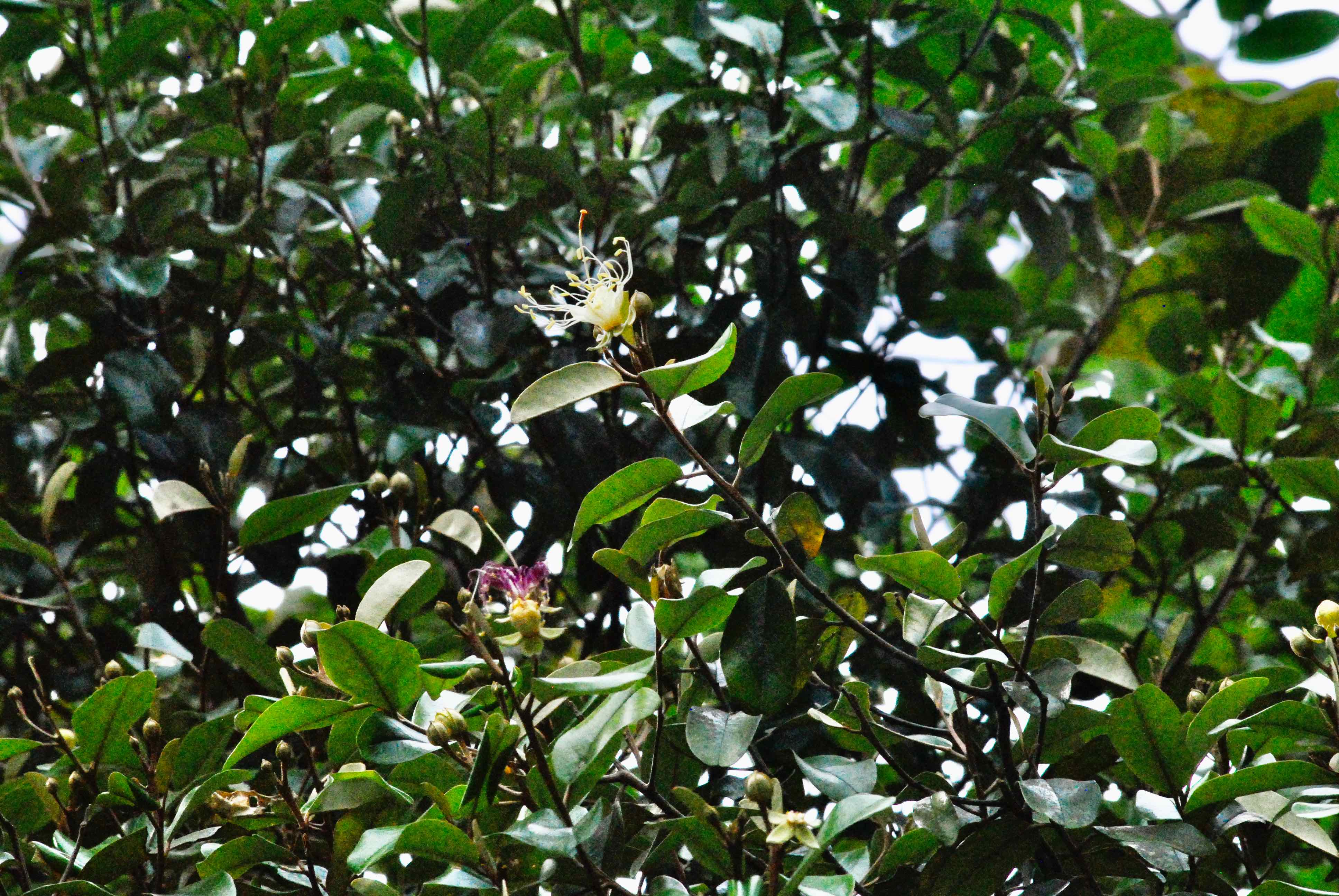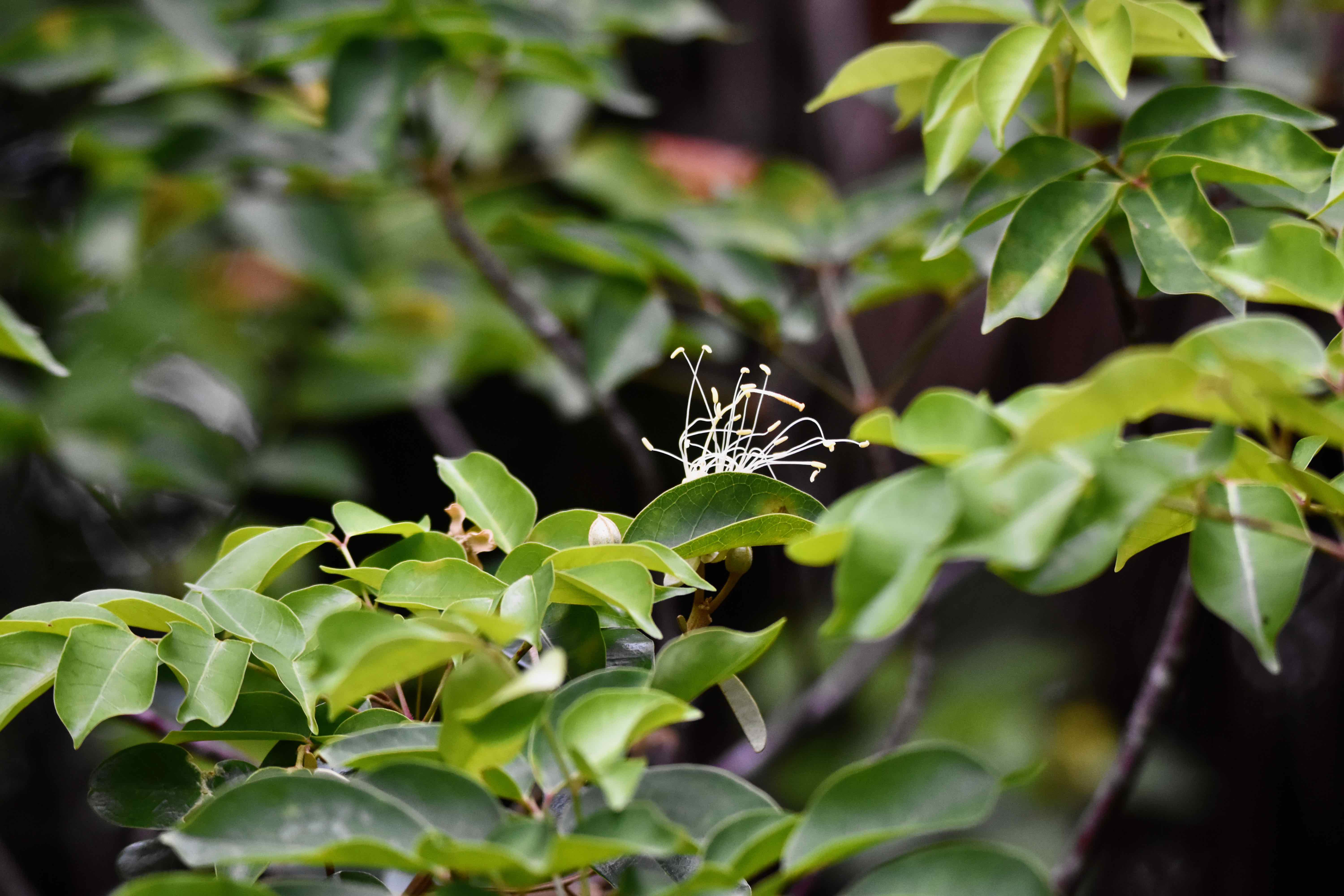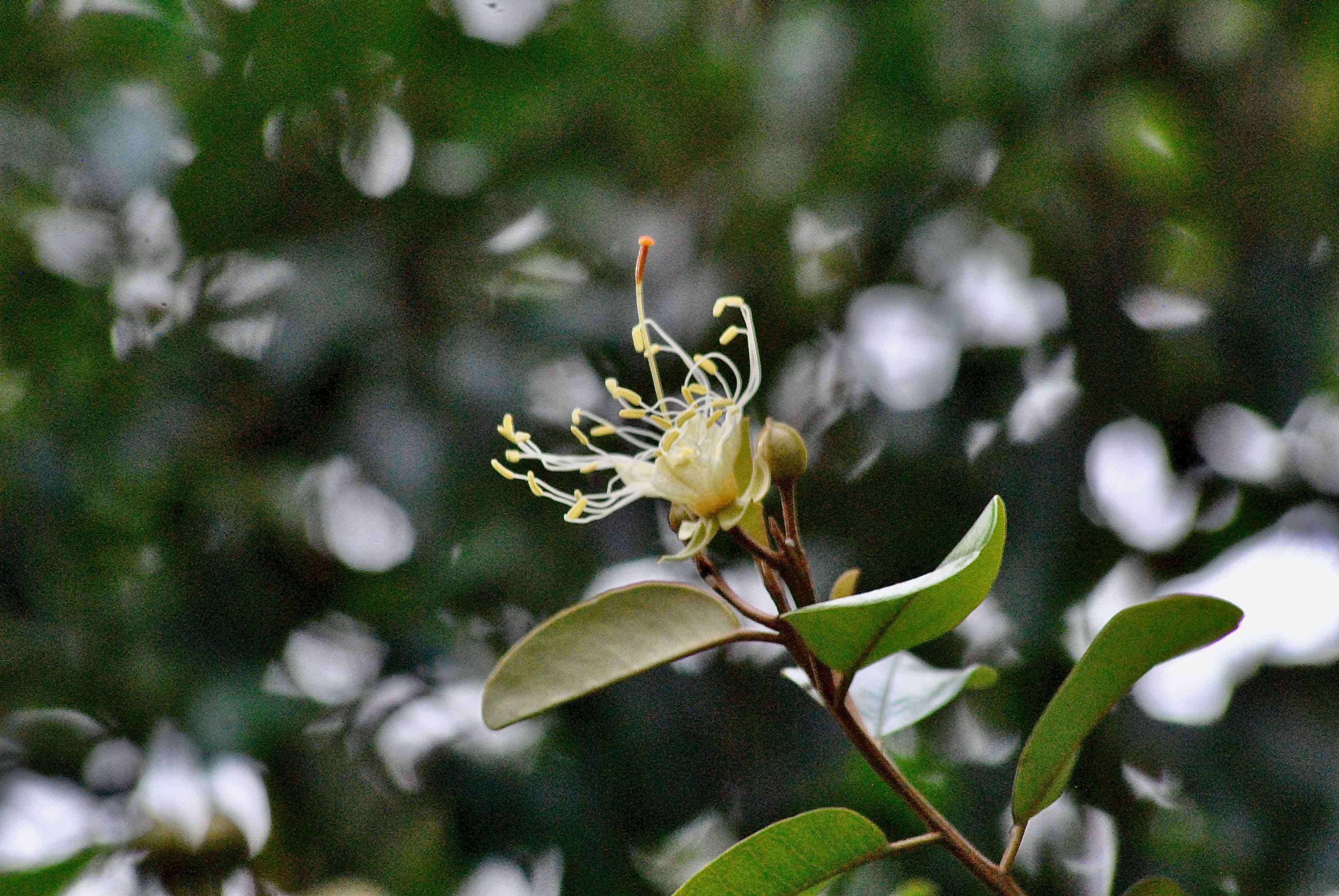
Jamaican Caper, photographed at Arch Creek Park, North Miami, Miami-Dade County, in April 2015.
Yes, Jamaican caper, Quadrella cynophallophora, is related to the tree that produces a bud that's used as an ingredient found in many Mediterranean cuisines. No, the buds on our guy are not really edible. Unless perhaps if you're a bird.
Jamaican caper is a Florida native found mainly in coastal counties from the middle of the state southward. It is found only in Florida among the 50 states, but its range includes the Caribbean, naturally, Mexico, Central America and parts of South America to Argentina. It is widely cultivated but has all but disappeared from the wild in Jamaica, of all places.
It's found in coastal scrubs, hammocks and woodlands. It grows in a wide variety of soils, in full sun and and part shade and is drought tolerant.
Some consider it a shrub; some consider it a small tree. It grows to about 15 or 20 tall, maximum. Between April and June, it puts out whispy, delicate flowers; for about a three-week period the blooms are intense.
The flowers emerge white and turn pink and then violet before shriveling and dropping from the plant. They open in the evening and last about 24 hours. The flowers are sweetly fragrant, especially in the late evening, attracting moths that pollinate the tree.
Other sources, particularly the University of the Virgin Islands, say Jamaican caper flowers throughout the year, and that the blooms last longer, but the difference might be due to geography
The fruit is a pod that can be a foot long, and splits open at maturity, revealing orange flesh and round, black seeds. Birds will eat the seeds.
The leaves on Jamaican caper are oblong in shape, simple and alternate on the stem. They have a leathery quality to the touch and are glossy and dark. New leaves have some bronze color to them.
The wood is hard and dense and is used in parts of the Caribbean to make fence posts and charcoal. The roots, bark, leaves and fruit are used to make tea, and as a traditional remedy for venereal disease and other internal and external ailments.
Jamaican caper is a member of Capparaceae, the caper family. Other common names include Jamaica capertree, black caper and black willow. A quick taxonomic note: the United States Department of Agriculture's PLANTS database uses Capparis cynophallophora as the scientific name for Jamaica caper and calls Quadrella jamaicensis a synonym.
Click on photo for larger image
Links for Jamaican Caper



